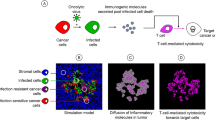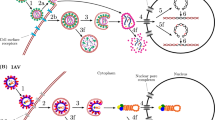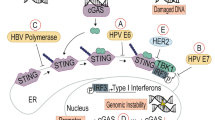Abstract
Human oncogenic viruses are defined as necessary but not sufficient to initiate cancer. Experimental evidence suggests that the oncogenic potential of a virus is effective only in cells that have already accumulated a number of genetic mutations leading to cell cycle deregulation. Current models for viral driven oncogenesis cannot explain why tumor development in carriers of tumorigenic viruses is a very rare event, occurring decades after virus infection. Considering that viruses are mutagenic agents per se and human oncogenic viruses additionally establish latent and persistent infections, I attempt here to provide a mechanism of tumor initiation both for RNA and DNA viruses, suggesting viruses could be both necessary and sufficient in human tumorigenesis. I hypothesize a general, albeit inefficient hit and rest mechanism by which viruses may produce a limited reservoir of cells harbouring genetic damage that would be initiated when the virus first hits the cell, before latency is established. Cells surviving genetic damage would consequently become more sensitive to further damage mediated by the otherwise insufficient transforming activity of virus products expressed in latency, or upon episodic reactivations (viral persistence). Cells with a combination of genetic damage leading to a cancerous phenotype would emerge very rarely, as the probability of such an occurrence would be dependent on severity and frequency of consecutive hit and rest cycles due to viral reinfections and reactivations.
Similar content being viewed by others
Article PDF
Author information
Authors and Affiliations
Corresponding author
Rights and permissions
About this article
Cite this article
Ripalti, A. Is the infection/latency/reactivation cycle of viruses an oncogenic engine?. Nat Prec (2007). https://doi.org/10.1038/npre.2007.1285.1
Received:
Accepted:
Published:
DOI: https://doi.org/10.1038/npre.2007.1285.1



